Sealife guideThe humphead wrasseCheilinus undulatus
Last updated on 09/04/2024 at 10:10 PM
the humphead wrasse, is a fish from the wrasse family (Labridae) in the order Perciformes. It is one of the oldest fish species still present in the world's seas and oceans, making it a true living fossil. It is commonly nicknamed in french the « Napoleon fish » or the « reef bison ».
Taxonomy
- Common name: Humphead wrasse, giant Wrasse
- French name: Poisson Napoléon, labre géant, bison des récifs
- Spanish name: Napoleón
- Scientific name: Cheilinus undulatus (Rüppell, 1835)
- Family name: Labridae
- Order name: Perciformes
- Class name: Actinopterygii
Description
The humphead wrasse typically measures around 24 inches but can grow up to 90 inches, making it the largest member of the wrasse family.

The humphead wrasse is characterized by the prominent hump on the forehead of the adult male, its large fleshy mouth, and its bulging eyes
This fish is characterized by the prominent hump on the forehead of the adult male, its large fleshy mouth and bulging eyes. The hump on its head, reminiscent of french emperor Napoleon’s bicorne hat, is the reason for its french nickname.
Its coloring is vibrant and dazzling, with electric blue marbling on a green background.
The humphead wrasse moves through the water primarily using its pectoral fins.
Geographic range
The humphead wrasse is found in the tropical waters of the Indian ocean, the Red sea and from southern Japan to the central islands of the Pacific ocean.
Habitat
The humphead wrasse prefers the shallow waters of coral reefs, often on the outer reef slopes. It is very common to see it along the edge of Australia’s Great Barrier Reef !
The humphead wrasse is a solitary, diurnal fish.
Diet
Carnivorous, it feeds on benthic invertebrates, mollusks, fish, sea urchins and can even ingest toxic species like boxfish and sea hares. It moves slowly and is therefore considered a harmless predator.
Reproduction
The humphead wrasse is a hermaphrodite ! It undergoes a sexual metamorphosis known as protogynous sequential hermaphroditism.
In simpler terms, the humphead wrasse is born female and later becomes male at sexual maturity with this change typically occurring around 15 years of age.
Did you know ?
The humphead wrasse can live up to 32 years !
Due to its late sexual maturity, the species is highly vulnerable to fishing. The humphead wrasse has been listed as an endangered species on the IUCN Red List since 1996 and its status was upgraded from « Vulnerable » to « Endangered » in 2004 !
The humphead wrasse is locally protected in Australia, the Philippines, the Maldives, Palau and New Caledonia.
Tips for observing
The humphead wrasse is not shy at all and easily approaches divers. It’s quite easy to swim near it as it puts on a show and often impresses with its size !
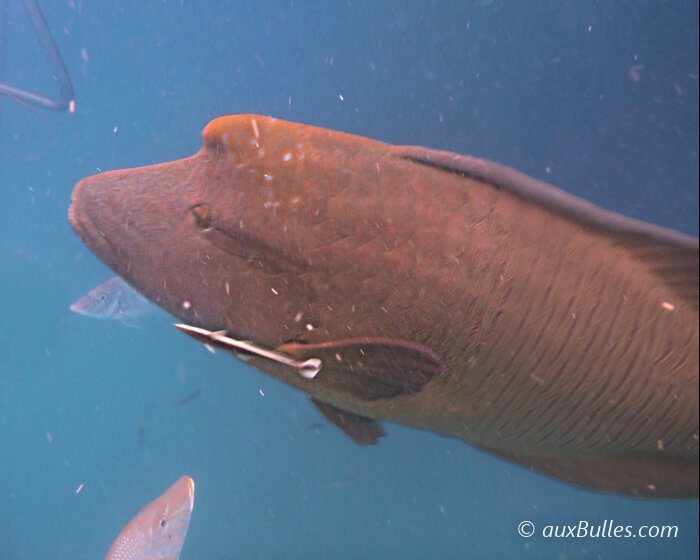
The humphead wrasse is a fish that typically measures around 24 inches but can reach up to 90 inches, making it the largest member of the wrasse family
Within the same genus
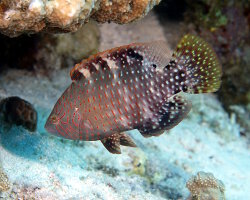
Abudjubbe wrasse
(Cheilinus abudjubbe)
(Cheilinus abudjubbe)

Floral wrasse
(Cheilinus chlorourus)
(Cheilinus chlorourus)
Within the same family
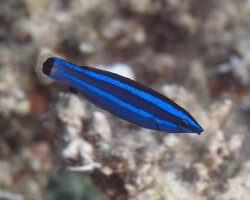
Fourline wrasse
(Larabicus quadrilineatus)
(Larabicus quadrilineatus)

Klunzinger's wrasse
(Thalassoma rueppellii)
(Thalassoma rueppellii)
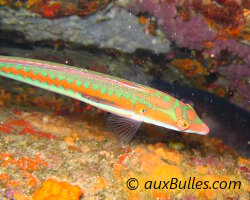
Mediterranean rainbow wrasse
(Coris julis)
(Coris julis)

Ornate wrasse
(Thalassoma pavo)
(Thalassoma pavo)

Saddle wrasse
(Thalassoma duperrey)
(Thalassoma duperrey)

Six line wrasse
(Pseudocheilinus hexataenia)
(Pseudocheilinus hexataenia)

Spanish hogfish
(Bodianus rufus)
(Bodianus rufus)

Yellowblotch razorfish
(Iniistius aneitensis)
(Iniistius aneitensis)
Discover also

Barramundi cod
(Cromileptes altivelis)
(Cromileptes altivelis)

Fangtooth moray
(Enchelycore anatina)
(Enchelycore anatina)
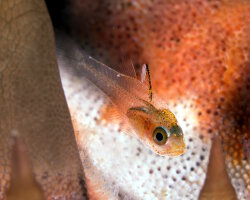
Frostfin cardinalfish
(Ostorhinchus hoevenii)
(Ostorhinchus hoevenii)

Leopard grouper
(Mycteroperca rosacea)
(Mycteroperca rosacea)

Reticulated sandperch
(Parapercis tetracantha)
(Parapercis tetracantha)

Spotted goatfish
(Pseudupeneus maculatus)
(Pseudupeneus maculatus)
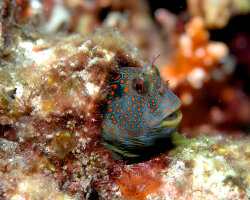
Tessellated blenny
(Hypsoblennius invemar)
(Hypsoblennius invemar)

Weedy scorpionfish
(Rhinopias frondosa)
(Rhinopias frondosa)
Our latestUpdates

Friday, December 19th 2025
The magic of Christmas decorations
Discover Christmas decorations in Florida: giant trees, illuminated palm trees, magical light displays and tropical settings to experience the holiday magic under the sun.
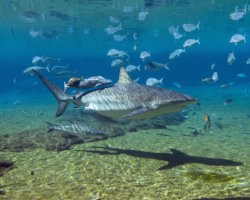
Monday, December 15th 2025
The dusky shark
Discover the dusky shark, one of the world's largest coastal sharks, and learn why this powerful predator is essential to marine ecosystems.

Friday, December 12th 2025
Christmas magic at Disney hotels
Experience the magic of Christmas at Disney hotels: enchanting decorations, giant Christmas trees, dazzling lights and a festive holiday atmosphere.
Photo of the Day
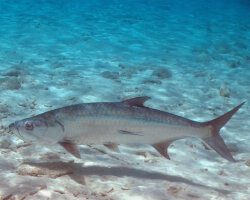
Tarpon de l'Atlantique
(Megalops atlanticus)
(Megalops atlanticus)
